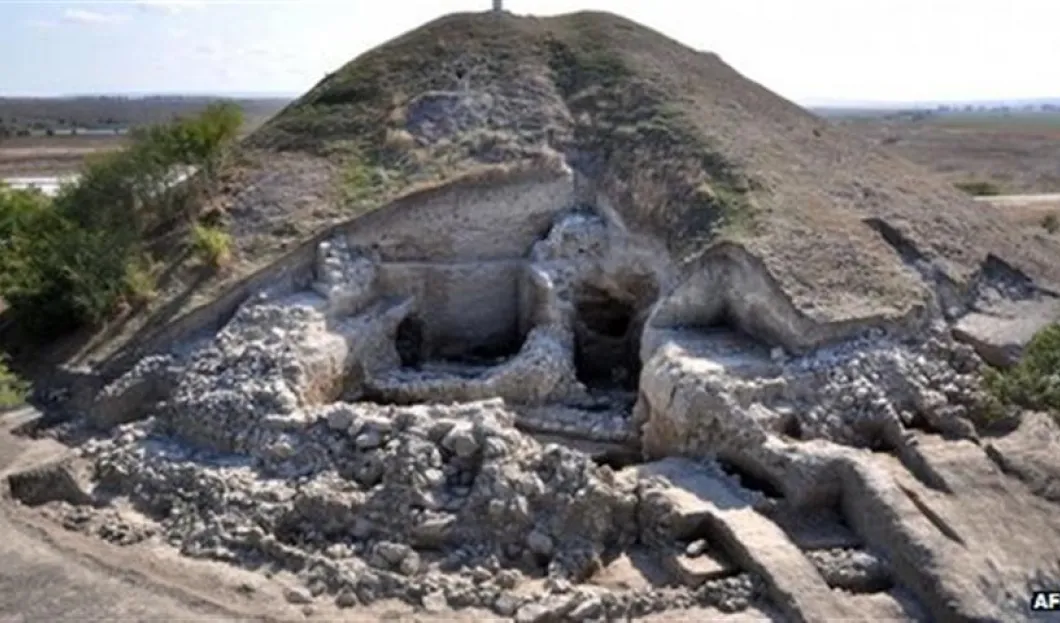
Why were massive riches found in the eastern region of Bulgaria? What is it to do with the largest prehistoric town ever discovered in Europe? And how does that relate to salt? Confused? Read on for the answers you need to know about a recent amazing find in Bulgaria.
The answers lie close to the modern town of Provadia in Bulgaria. Excavations have discovered the remains of two-story houses, several pits used for rituals, gate parts, some bastion structures, and fortified walls from a later period. They have been carbon-dated and found to be from 4,700 to 4,200 BC.
Vasil Nikolov, from the National Institute of Archaeology, said that the town was not like the cities found in Greece, or ancient Rome, or perhaps the medieval settlements. Many archaeologists feel this town was from around the fifth millennium BC.
Nikolov has been working on this excavation since 2005 near Varna, close to the Black Sea. Krum Bachvarov, archeologist researcher, qualified this amazing find as "extremely interesting", and much of the interest is due to the burial positions and the objects around the graves. These are different from Neolithic graves found in Bulgaria. Bachvarov talked about the large walls circumnavigating the settlement, which were tall and from stone blocks, being unseen before in these prehistoric excavations in south east Europe.
The town has a fortified wall and a religious center, as well as a center for the main commodity of the town, a product traded extensively. The settlement was for about 350 people, and it meets all the conditions in order to be known as the oldest prehistoric town in Europe.
Amazingly, the people who lived there did not know about the cart and wheel at that time. But they still managed to haul big rocks, and build massive walls. Nikolov cannot but wonder why. They must have had something to hide behind them. And the answer is simple – salt.
There are some of the biggest rock-salt deposits in south-eastern Europe in the area, Nikolov has explained. And this is what made Provadia-Solnitsata the town it came to be. They still mine salt in the area. However, 7,500 years ago, salt was an extremely useful commodity. It had been used as a way to trade, a currency. That, as well as being vital for people’s lives.
Salt extraction on the site began at around 5,500 BC. People started to boil the salty water from the springs, using dome kilns, which were discovered inside the settlement, Nikolov explains. This has all been carbon-dated in a Glasgow laboratory, in Scotland, UK.
Bachvarov confirms that this was one of the first times in southeast Europe that archaeologists have discovered salt production this early in mankind's existence, with it being provable by archaeological data, and then backed up by scientific data.
Nikolov found that production had increased from 5,500 BC, at that time one load meant 25 kilograms, or 55 pounds, of salt. Then by 4,700 to 4,500 production increased to between 4,000 to 5,000 kilos of the salt.
Salt gave the population great economic power, which would explain the strange and wonderful gold riches discovered in graves in the Varna Necropolis, dating back to 4,300, explained Nikolov.
While the citizens were indeed wealthy, with 3000 of the oldest jewelry pieces in the world found in the settlement, ironically the excavations have suffered from a terrible lack of funding from the government and state. Fortunately, Nikolov had managed to gain money from private donations.
That, combined with both a British anthropologist and Japanese ceramics expert working for free, as well as a group of radiocarbon specialists from Germany this season, has meant that this amazing archaeological find has been investigated, giving just another amazing reason to visit south-eastern Bulgaria.










